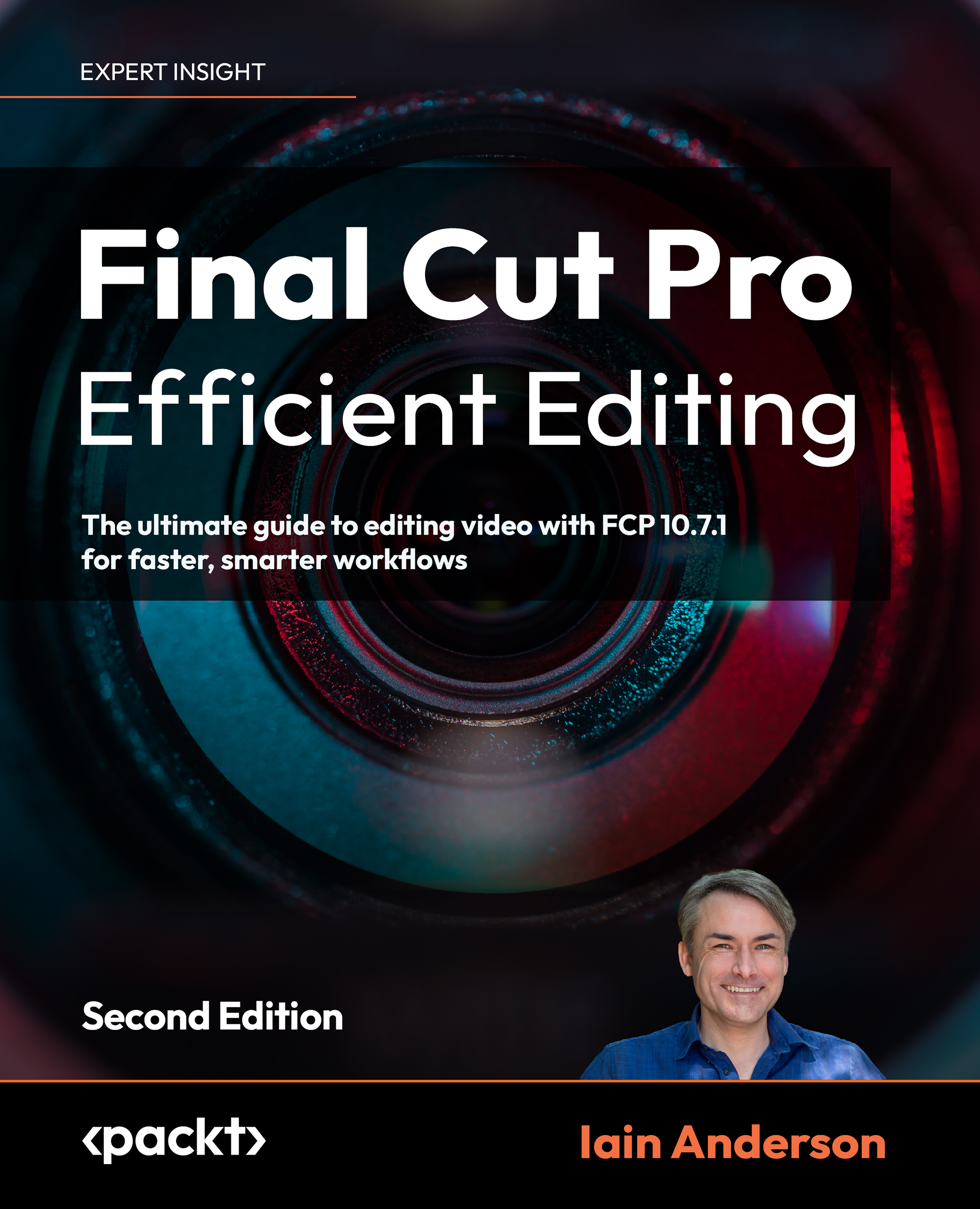Understanding 360° cameras
Most 360° cameras use two very wide-angle lenses positioned back to back in a relatively thin body, capturing a 2D monoscopic 360° image. Some higher-end cameras use a greater number of lenses in a larger, often spherical body, and may be able to capture a 3D stereoscopic 360° image — separate images for the left and right eyes — though this is rare. No matter how many lenses there are, the image is captured in every direction around the camera, so the position of the camera is far more important than its orientation:

Figure A.1: There are lenses on the front and the back of this Insta360 RS 1-inch 360 Edition camera
After capture, the two or more images captured are then processed to form a single image. For consumer cameras, this is fairly straightforward — a single file records the two circular fisheye images next to one another in a large video frame, typically around 6K across in...

































































